Of course, any important and most bright decoration festive table is the cake, which, regardless of whether it is a wedding or a birthday, is one of the main characters of the event.
You have probably come across such cakes more than once; they are unique in their own way. appearance resemble real works of art: soft outlines, perfectly smooth surfaces, and the figures and decorations with which these sweet beauties are decorated can easily be confused with the real ones, because they are really close to their real prototypes!
There are even specimens that are a pity to eat, they are so unusual and realistic in their execution. Culinary masters achieve this effect with the help of mastic; this material copes well with the task of decorating cakes and other culinary products.
For those who first encountered this method of decoration with their own eyes, it is probably difficult to guess how this is generally done; most housewives even believe that only experienced professionals can decorate with mastic.
There is part of the truth in this; in order for you to really get a beautiful creation, experience and practice are simply necessary, but you don’t have to be a professional pastry chef for this. After practicing several times, you will understand what is what and then you will definitely please your loved ones with an unusual dessert, the main thing in this matter, as in many others, is desire!
Mastic for decorating confectionery products is divided into two main types - the one that is prepared on your own at home and the one that is made in production.
Of course, at home you can always make the kind of mastic that you need, but homemade and industrial ones do not differ much in taste.
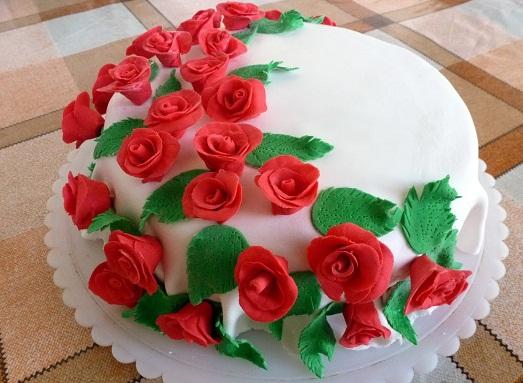
But real housewives do not look for easy ways, so we have prepared for you a complete selection of tips that will explain to you how you can make mastic for a cake or other confectionery products with your own hands.
What kind of mastic is there?
This amazing combination of several ingredients is a viscous and plastic mass that even slightly resembles plasticine or tight dough.
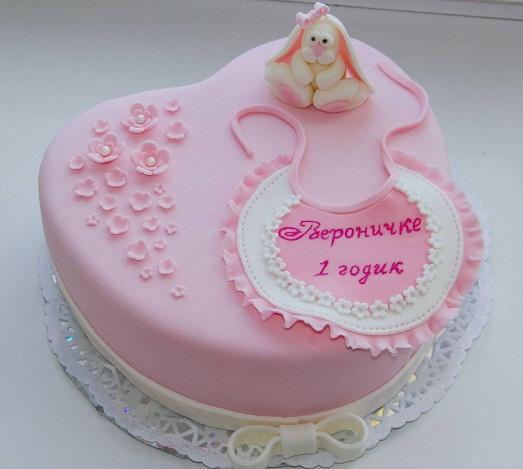
In fact, it is very easy to sculpt various figures and patterns from properly mixed and prepared mastic; it does not stick to your hands and easily lends itself to various shapes.
In order to obtain such a consistency, it is necessary to try different recipes several times, because it turns out that mastic comes in various forms, which are easier to manipulate depending on certain conditions.
By the way, the finished mastic can easily be stored for some time. This is necessary in cases where excess materials remain from one product or, for example, you decide to prepare in advance for some event.
In order for it to be preserved in proper form, the mastic must be packed in cling film, and then transferred to a plastic container with a lid, and in this form, send it to the freezer, where it can easily lie for about two to three months.
By the way, if you decide to decorate the cake with some mastic figures, then this matter must be done in advance; they must lie down and harden for at least a couple of weeks before they are placed on the cake, this way you will avoid all sorts of deformations and distortions.
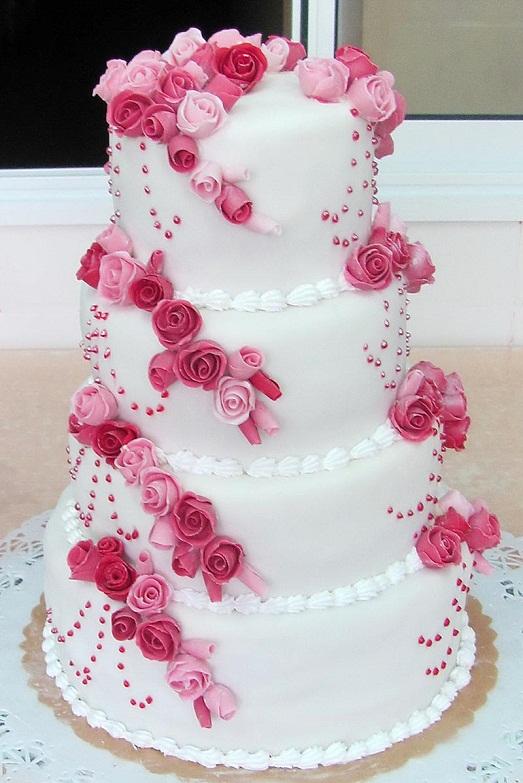
If you learn to work with such material, then your cakes will be able to delight others with incredibly beautiful figures and decorations: flowers, bows, hearts, men, booties or numbers, letters - this is not all that can be made from mastic.
As you probably already understood, decorating cakes using such techniques is an entire art that requires imagination and intense desire; only under such conditions can you get original creations.
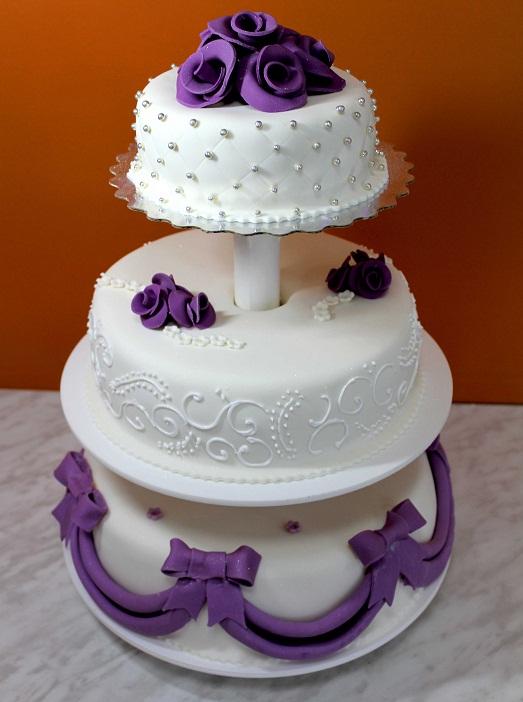
In order to work with mastic, you need special stencils or cuttings that will help you create figures. In addition, for any mastic recipe you will need a flat surface (a wooden board or a dry table), a rolling pin, a ruler, a round knife, cling film and colored tape.

Turning to any example of such works, you can immediately notice the rich colors and bright tones, thanks to which such incredible paintings are created. How is this done?
The easiest way is to use food coloring; regular paints that we use for coloring will also work. easter eggs. If you are categorically against any chemicals, then natural food colors will come to your aid. What are we talking about?

We are talking, for example, about beet juice, which will color the mastic red, spinach juice green, and carrot juice orange. Of course, the colors will not be as saturated, but absolutely natural.
It is more correct to add dyes during the preparation of the mastic than to the already prepared mass, but if this has already happened, then remember that to begin with, a small ball is formed from the mastic, in which a small depression is made. We drop a couple of drops of color into it and thoroughly stir our ball.
![]()
How to make mastic from sugar, marshmallows or marshmallows?
It is believed that the easiest way to make mastic is from marshmallows or marshmallows, and for those who do not know what marshmallows are, these are small marshmallow candies with a viscous consistency, often produced in small packs or sold by weight in the form of worms, vampire jaws and others figurines.
Marshmallow mastic
- Chewy soufflé (marshmallow) – 50 g;
- Powdered sugar – 1-1.5 cups (depending on consistency);
- Lemon juice – 1 teaspoon;
First, you will have to organize a water bath: put a pan of water on the gas, and on it a plate on which it will be convenient to place a bowl of marshmallow pieces.
Pour lemon juice over the candies and begin to heat the bowl, do not forget to stir occasionally. It is important here not to overheat, wait for the moment when it begins to melt and slightly increase in volume. When you see this, remove the bowl from the heat and, if you want to color your mastic, add or pour in the dyes.
Now mix the melted mass with ¾ cup of powder, add it little by little, knead the dough in parallel, achieve a texture so that it does not stick to your hands and becomes smooth. If you feel that the mastic is sticking to your hands, then add a little more powdered sugar. When everything is ready, wrap the mass tightly in cellophane and put it in the refrigerator for half an hour.
Marshmallow mastic
- Marshmallow – 170 g;
- Dry cream – 70-80 g;
- Powdered sugar – 300-500 g (as much as absorbed);
- Lemon juice – 1 tbsp. spoon;
- Vanilla sugar.
Chop the marshmallows into small pieces, pour lemon over them and put them in the microwave for 30 seconds (replacing a steam bath).
You should get a warm mass, which we mix with a pinch of vanillin, dry cream and add a little powdered sugar to this mixture, while constantly and thoroughly kneading the mass. We achieve a mixture similar to plasticine, wrap it in cellophane and put it in the refrigerator for half an hour or an hour.
- Do not forget that the mastic cannot be left in the air for a long time - it dries out.
- Choose powdered sugar carefully - it should be free of small sugar crystals, otherwise they will tear the mastic layer when rolling out.
- You can only cover cakes with mastic that are covered with a special outer layer - buttercream, ganache or marzipan.
Nowadays you won’t surprise anyone with a delicious unusual cake, because the service market is filled with offers from talented confectioners working at home. Store shelves are filled with factory-made sweet products of any price category. How to surprise your beloved family and friends? And here cake mastic comes to the rescue.
Confectioners often love mastic for its plasticity, pleasant sugary taste, bright colors, and ability to harden. Thanks to her, ordinary cakes become a true work of art.
It is sold in any specialized store, where you can also purchase or order ready-made figurines from it, but it will cost a lot. It will be much more “budgetary” to make it yourself, especially since there are several recipes for its preparation, and you can choose your own.
It may seem quite simple to make it at home, but, as a rule, problems may arise at first. The main thing is not to despair, but to try until you get a sweet mass with the consistency of soft plasticine. You may need to use a different recipe.
Homemade mastic can easily be used to make the intended figures; it should be easy to roll out with a rolling pin without tearing. This is necessary for covering a cake or pastry. Dyes can be added either directly during the mixing process or added colors in finished form.
There are several ways to make mastic.
From marshmallows
This is one of the most simple recipes homemade mastic for cake. It comes out unusually pleasant, soft, plastic. This sugar material will definitely make real confectionery masterpieces.
Marshmallows are Western sweets. They are an airy soufflé. Not to be confused with our favorite marshmallow. Often on bags of such candies it is written “marshmallow”.
![]()
Russian manufacturers replace the name with “soufflé”. When choosing this product, it is better to focus on candies white, since they can easily be given a tint using dye.
Ingredients:
- marshmallow – 100g. (one package of soufflé);
- water or lemon juice – 1 tbsp;
- powdered sugar – 1-1.5 cups.
The amount of ingredients, of course, can be increased if you need a lot of mastic for decoration.
Pay attention to the quality of the powdered sugar; it must be thoroughly ground. Only in this case will you get a uniform mass, ideal for culinary creativity. This rule applies to all recipes.
Preparation:
- Place the marshmallows in a deep microwave-safe bowl. Add lemon juice or water to the fluffy candies;
- Next, place the container in the microwave for 10-20 seconds. The soufflé should melt and increase in volume. The microwave can be replaced with a water bath;
- Remove the heated and swollen marshmallows. If necessary, add food coloring to the mixture and mix;
- Now comes the turn of the sifted powdered sugar. It is better to pour it into a bowl in small parts and knead with a spatula until the familiar dough is formed;
- Sprinkle the table with powdered sugar like flour. Take the mastic blank out of the cup and knead it by hand until it stops being sticky;
- Immediately pack fresh mastic tightly in cling film and place it in the refrigerator for 30-40 minutes.
After this, you can safely start creating with a kind of sugar plasticine or use it to cover a cake.
Lemon juice or water is sometimes replaced with butter, and some even mix these products. You can try this option too.
From condensed milk
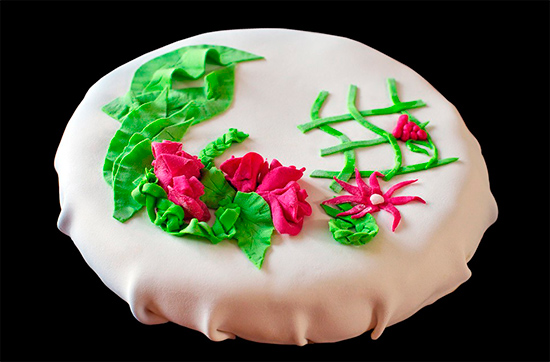
This method of preparing sweet culinary mass can be called “for the lazy.”
Ingredients:
- powdered milk - 1.5 tbsp;
- condensed milk - 1 can;
- powdered sugar - 1 tbsp.
Preparation:
Combine dry milk and condensed milk in a cup until a mass appears that looks like soft plasticine in jars. That's all. You will get the most delicate, non-sugary homemade mastic with a pleasant milky taste. True, it cannot boast of a pure white color, and the added dyes will be distorted in shades. Parents of children will appreciate milk mastic.
If this type of cake design does not seem very sweet, you can add more powdered sugar.
Chocolate
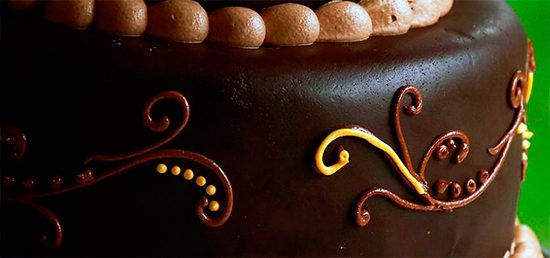
Chocolate fans will certainly appreciate this mastic. Its peculiarity is that decorations made from it do not harden entirely in the air, remaining soft, they can even be eaten separately from the cake. And the magical chocolate taste and shade will definitely capture the hearts and mouths of many.
Ingredients:
- marshmallow - 90 g;
- dark chocolate -100 g;
- butter - 0.5-1 tbsp. l.;
- cream (30%) - 40 ml;
- powdered sugar - 100-120 g;
- cognac - 1-2 tbsp. l.
- Place the chocolate pieces in a saucepan and melt it in a water bath;
- Add soufflé there. Constantly stir the entire contents of the saucepan;
- As soon as half has melted, pour cognac, cream and butter into the melted chocolate. Do not forget to stir all the time until you see a thick paste without grains;
- Remove the container from the heat and, continuing to work with a spoon, pour powdered sugar into the contents. Next, follow the analogy of preparing marshmallow mastic. The result should be a fatty plastic mass that does not stick to your hands at all.
From gelatin
Also a very simple recipe.
Required components:
- gelatin-2 tsp;
- powdered sugar-0.5 kg;
- water-50 ml.
Preparation:
- Place gelatin in a cup, add water and dissolve in a water bath;
- Carefully pour the cooled gelatin into the powder. As in previous recipes, you need to mix the mass until it becomes clay.
From marshmallows
This method of preparation is completely identical to the version with marshmallows. It is important not to confuse soufflé with denser marshmallows. To prepare it, you need to cut it into large pieces. Many people do not notice the difference in taste and quality of these two masses. Only marshmallows, as a necessary component, can be bought in every store, unlike marshmallows. And whoever knows how much a soufflé costs will immediately understand which mastic will be more profitable for the hostess’s wallet.
Sugar
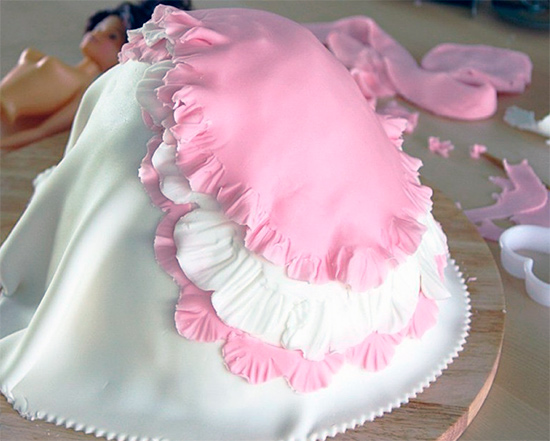
It is believed that this cooking option is very simple, but many housewives will argue with this. An impressive list of required ingredients confirms this:
- sour cream or milk - 0.5 cups;
- gelatin – 3 tbsp;
- caramel molasses - 1 cup;
- oil – 3 tbsp;
- glycerin-3 tbsp;
- vanilla – 2 tbsp;
- sugar – 1.5. kg.
Preparation:
- Mix gelatin with sour cream. After the gelatin thickens, place the mixture in the microwave and heat until it completely melts;
- Next, you need to put together caramel, glycerin, butter, vanilla, salt and pour this mixture into gelatin;
- Heat the resulting mass in the microwave for two minutes;
- Take about 1 kg. sugar and add the cooled mixture to it. Gradually add all the sugar to the mixture and mix with a mixer;
- Next, use the familiar method to bring it to the desired consistency. Then wrap it in cling film and put it in the refrigerator for 6 hours.
This recipe is not only the most labor-intensive, but also not financially profitable. Fans of experiments can try to bring it to life.
Secrets of use
In order for the cake mastic to perform its function 100% and give the baked goods an interesting, beautiful, memorable look, it is worth remembering a few rules when using it:
- Any mastic will melt from a wet base, so before covering the cake, “prime” it, for example, with butter cream;
- When exposed to air, it hardens, so you can either dry the treasured figures, or, conversely, cover them;
- To give it color at the creation stage, natural dyes are suitable: cocoa powder, beet and carrot juices, spinach;
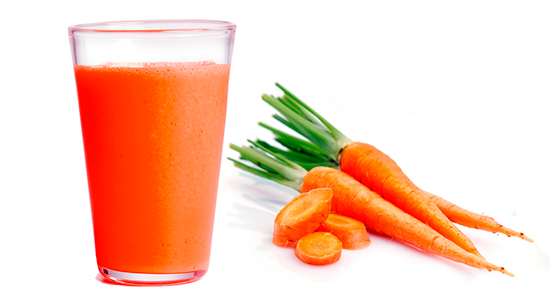
- If the mastic is difficult to roll, the sugar mass can be safely heated in the microwave;
- Before serving, the cake decorated with mastic can be lightly moistened with water using a silicone brush. Then its surface will acquire a pleasant, slightly glossy shine;
- Homemade cake mastic keeps well in the freezer for about 2 months;
- Dry mastic figurines can be used several times if you put them in a dry, closed container;
- To ensure that the parts of the product stick together well, it is better to moisten the attachment points with a drop of water.
Homemade cake mastic is a simple and budget-friendly option for creating a festive atmosphere even on an ordinary day.
Useful information?
Secrets of preparing and using mastic for cakes
5 (100%) 3Cooking mastic– an excellent decorative and edible material for cakes and simple pies and muffins. Butter products decorated with mastic turn into works of art, which is a shame!
There are many mastic recipes, but the base is always the same - powdered sugar. The binding components are gelatin and glucose.
How to make mastic yourself?
So: there are two main options for mastic - milk and gelatin. But there are also less labor-intensive recipes, which we will give below.
Let's start with
1.MILK MASTIC. It is easier to prepare and more convenient to use. Mix equal amounts of milk powder and powdered sugar, then add sweet condensed milk (1:1:1). Knead the mixture until it reaches the consistency of soft plasticine. You can tint the mastic a little with food coloring.
Now, remembering the labor lessons at school, we sculpt flowers, leaves, berries, bunnies, ducks, etc. from it. The fashioned decorations need to be dried. You can roll out the mastic into a layer 1-2 mm thick or thicker, and cut out the figures with a notch or a knife. It is better to roll out on cling film and sprinkle the mastic with powdered sugar.
If the mastic sticks to your hands during modeling, you need to add powdered sugar; if it dries out, wrap it in parchment or film. The only drawback milk mastic is yellowish in color, so if you need to make flowers white, or soft pink and blue, I use gelatin mastic.
2. GELATIN MASTIC more capricious in preparation, you need to feel it, as confectioners say. Take gelatin - 10g, powdered sugar 900g, water 10 tablespoons.
Gelatin is soaked for 40-60 minutes, heated in a water bath, and then cooled. In the still liquid, but already cool gelatin, GRADUALLY add powdered sugar, kneading thoroughly. Delicate flowers, such as tulips, are especially good from this mastic. To do this, roll out the colored mastic into a thin layer, sprinkle with powdered sugar. Then, tearing off small pieces, we give the mastic the shape of a petal using a regular teaspoon (several spoons will be needed). Covering a spoon with mastic inside, remove the excess. The petal is ready, let it dry, and in the meantime we move on to the next one.
Already on the cake we combine the petals into buds, and cut out the leaves from the same mastic, tinting them green.
3. Sugar mastic from marshmallows.
— marshmallow 50 g
- powdered sugar about 200 g
Place the coffee on a plate, add a tablespoon of water and place in the microwave for 20-30 seconds. They will melt.
Take it out, mash it with a fork, add coloring and powdered sugar.
First I kneaded with a fork, then with my hands. You need a lot of powdered sugar, but don't overdo it! The mastic is a little and should stick to your hands. If there is too much powder, the mastic will harden quickly and will not stick well.
4. Marshmallow mastic
To prepare you will need:
- Powdered sugar - how much the mass will absorb;
- Marshmallow (chewable) - 200 gr.;
- Water – 2 tbsp.
- Food coloring to change the color of the mastic.
First, marshmallows are placed in a deep plate, water is added (to give the mass sourness, it can be replaced with lemon juice), all this is placed in the microwave for 40 seconds. The mastic for the cake according to the recipe turns out to be soft and plastic. When the marshmallow has melted a little, powder is added, which is sifted in advance.
It needs to be added until the mass looks like plasticine, and this must be done gradually so as not to add too much, otherwise it will be impossible to work with the mastic - it will become rough. As soon as the mass is formed, you need to wrap it in cling film and put it in the freezer for 30-40 minutes, and then you can start working with it.
Experienced confectioners know that each type of mastic is suitable for specific purposes. But housewives, carried away by art, find different ways how to make cake mastic at home. More often, the main criteria are inexpensive and accessible products, ease of preparation, versatility and the ability to color the mass after cooking.
Secrets of working with mastic!
1. Powdered sugar for mastic should be very finely ground. If there are sugar crystals in it, the layer will tear when rolling.
2. Depending on the type of candy, you may need much more powdered sugar than indicated in the recipe, so you need to stock up in large quantities in advance.
3. The mastic coating cannot be applied to a damp base - to soaked cakes, to sour cream, etc. The mastic dissolves quickly from moisture.
4. As a layer between the cake and mastic, you can use butter cream (already frozen in the refrigerator), ganache or marzipan.
5. To glue jewelry onto a mastic coating, the gluing area should be slightly moistened with water. For gluing different parts For mastic figurines, you can use protein or protein with a small addition of powdered sugar.
6. Marshmallows are most often sold in more than one color. It is best to buy white marshmallows. Colored marshmallows can be divided by color - put the white halves in one bowl, and the pink halves in another.
7. Marshmallow figures can be decorated with food coloring on top or coloring can be added during the preparation of the mastic.
Attention!
• If there is high humidity in the room, the cake covered with mastic may become covered with condensed moisture after being removed from the refrigerator. In this case, it is advisable to serve it immediately from the refrigerator to the table. If you still need time before serving, you can carefully blot the moisture from the mastic with a napkin. Or place the cake under a fan.
• If the mastic has cooled down and began to roll out poorly, you can warm it up a little in the microwave or in a hot oven. She will become plastic again.
• You can store unused mastic in the refrigerator (1~2 weeks) or in the freezer (1~2 months), after wrapping it in plastic film or placing it in a container.
• Finished dried mastic figures should be stored in a tightly closed box in a dry place. These figurines can be stored for several months!
• The mastic coating cannot be applied to a damp base - to soaked cakes, to sour cream, etc. The mastic dissolves quickly from moisture.
• You can use buttercream (already set in the refrigerator), ganache or marzipan as a layer between the cake and fondant.
• I think that if the top cake is not lubricated with anything, the mastic will not lie evenly on the cake. Cream or marzipan allows you to smooth out all the unevenness on the surface of the cake. The surface of the cake for the mastic should be perfectly flat.
Making jewelry with mastic
Today, not all people understand what mastic is. Many people don’t realize that this is the name of a decoration for a cake or pie. To be more precise, this is just an edible cake decor that you can create with your own hands. In fact, this is very convenient, because with the help of mastic you can create original edible paintings, as well as congratulate your loved one with your own hands. You don't have to be a skilled pastry chef to master the technique of creating fondant. Making mastic at home is quite simple.
The easiest method to make mastic
You will need a small set of products and a desire to create. Please note that properly prepared mastic should resemble in consistency nothing more than plasticine. It is this structure of the mastic that allows you to create figures and patterns of different sizes and shapes. You can create shapes not just to decorate a dish; it’s no secret that they will taste no worse than ordinary sweets. If you are not afraid to experiment, then you simply need to master this technique. You can make mastic at home with extra supplies.
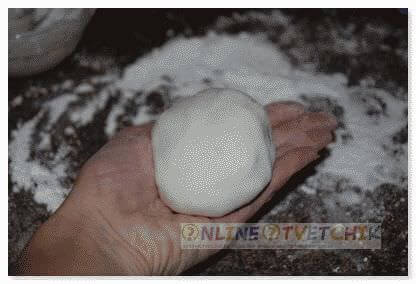 The best way preparing mastic
The best way preparing mastic You can place it in the refrigerator and store it there for about 3 months, using it each time to decorate cakes. To ensure that the mastic does not lose its unique properties, it should be wrapped in polyethylene or regular film. Prepare this substance very simple. To do this, you should skimp on the store in advance and purchase the following products. You will need gelatin, 10 g will be enough, 1/3 cup of regular filtered water, and also, very little, citric acid. You will have enough of this substance literally on the tip of a knife. The most important ingredient is powdered sugar. You will need a large amount of it. Purchase about 500g of this product.
You can make mastic at home using the following technology. To do this, first of all, you must prepare gelatin. It is necessary to soak it in water until it swells. For these purposes, you should use cold water. You need to soak the gelatin for about an hour, maybe a little more. After the gelatin has acquired the appropriate shape, it needs to be melted. To do this, create a water bath and dissolve it, then simply add citric acid. After which the resulting mass is allowed to cool properly. Make powdered sugar.
Making the mask flexible
To make the mastic flexible and plastic, some subtleties must be observed. It is worth carefully sifting the powdered sugar and making a small hole in this slide, then mark the gelatin into this hole, after which you should very quickly mix all the ingredients and knead a kind of dough. You should get a fairly homogeneous white substance. If you do everything correctly, following our advice, you will eventually be able to get plastic mastic from sugar.
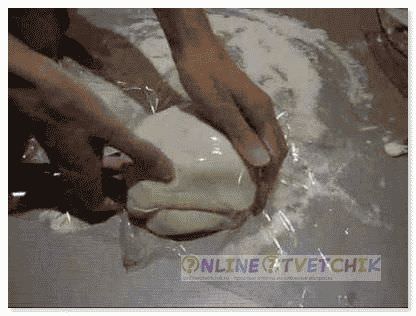 Making flexible mastic with your own hands
Making flexible mastic with your own hands Many cooking shows tell you how to make fondant at home. The recipes are always different. We suggest you follow our recipe, there are no difficulties in it, the only thing that is required from you is attention. After you have received the mastic, you can roll it into a layer. In order not to damage the surface, the mastic must be covered with a thin film, and only then begin to roll out.
This is a great decoration for any sweet dish. You can use various cutters to cut out flowers or animals. You can also create complex compositions from sugar figures; you only need to use your imagination and a boring dish will immediately turn into a complex, bright composition. You can create a flower by first cutting out the required number of petals, leaves and the middle. Your drawing doesn't have to be flat. Mastic allows you to create three-dimensional compositions.
How to make the right mastic
You already know how to make mastic at home. You also need to understand how to attach the parts. For this you only need water. A drop of water will be enough to hold the details of the composition together. But what if you don't want to be limited to white fondant parts. You may want to create a bright, colorful composition and multi-colored elements. There's no problem with that.
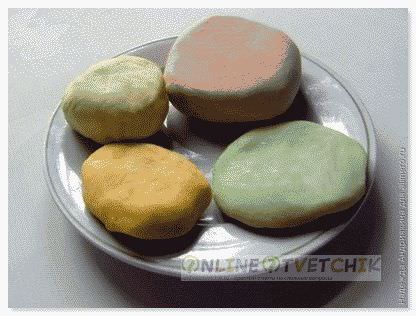 The mastic should look like this
The mastic should look like this The thing is that mastic can be painted. You will learn how to do this correctly right now. To do this, it is enough to use natural dyes, which are contained in different products. Let's say red veet can be easily obtained from beets. If you require brown, then cocoa powder is suitable for these purposes.
If you require unusual color, which cannot be obtained from natural dyes, you will need to use food coloring the desired shade. Master classes for creating mastic are very common today. You don’t have to sign up for them, because everything you need can be found on the Internet. I would like to say a few more words about the coloring of mastic. It is important to understand the technique of assigning colors to figures. You will be required to perform a simple algorithm of actions. To do this, you need to add a coloring agent and begin to thoroughly knead the mastic. After these movements, the mass should acquire the desired color.
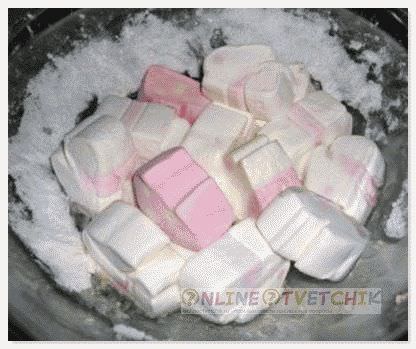 You should get the following elements
You should get the following elements Work harder and you'll get the color you want the first time. Roses are often made from mastic. This is a delicate decoration that can add a festive mood to the cake. It's very easy to do. You need to cut out a certain number of circles and roll them, having previously laid them out, going beyond the edge of each. The petal circles should fit tightly and should be held together with the same water.
Delicious mastic with sugar
Sugar mastic is shown in photos of cakes and pies. This is a universal way to decorate dishes, which does not require large expenses, although it can create real edible masterpieces. Mastic happens different types. Marshmallow mastic is very popular. If you have not yet come across a similar product, then we hasten to assure you that these are ordinary marshmallow candies. The advantages of such mastic are very great. It is worth noting the versatility of this product. It is quite easy to work with it and create the desired textures.
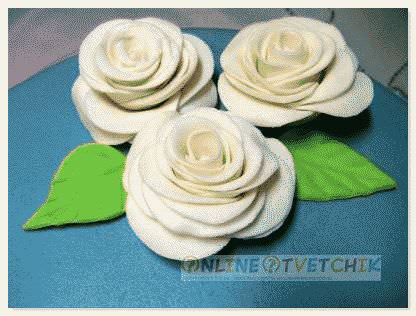 Mastic with sugar for cakes
Mastic with sugar for cakes To prepare a product such as marshmallow mastic, you should watch the video or follow our simple instructions. You will need marshmallow candies, powdered sugar and water. This mastic is prepared in the same way as regular mastic, but its properties are slightly different. It takes the desired shape very easily and is lighter in weight. This is great material to work with.
Regardless of what type of mastic you prefer for your work, you will be satisfied. Using this substance, you can hide defects in cakes, while giving the cake the desired mood and theme. Mastic is a very practical edible material that every housewife should use to decorate her exquisite desserts.
Video
Sugar mastic for cake is a thick plastic cream from which it is easy to make various figures for decorating baked goods. It has a pleasant taste and has a long shelf life. In this article we have collected the most popular mastic recipes - they will be useful for those who always prepare cakes at home: all instructions are illustrated with photographs and step-by-step recommendations, so you will definitely succeed!
Making classic sugar mastic for a cake is not difficult - any non-professional who wants to prepare desserts at home can do it.
We prepare a mixture of the following products:
- Powdered sugar – 455 grams.
- Food grade glycerin – 2 teaspoons.
- Gelatin – 1.5 teaspoons.
- Invert syrup – 1.5 tablespoons.
- Water – 2 tablespoons.
Go to step by step instructions with photo. First, the gelatin is slightly heated in warm water. Then the container is placed in a steam bath, where it is kept for 1–2 minutes. The main thing is not to let the gelatin boil, otherwise it will lose its adhesive properties. Syrup is added to hot gelatin.
Next step: sift the powdered sugar before using. This will protect against lumps that can ruin the appearance.
After the powder has been thoroughly sifted, it must be added to the gelatin mass, then stir everything with your hands. The resulting base can be used immediately (roll it out correctly with a rolling pin, and then apply it to the cake or make figures), or you can leave it for the future. If you properly package and store the mastic at home in the refrigerator, the shelf life of the product can be up to 2 weeks.

If you have mastered the classic recipe, you can make an unusual mastic for the cake, for example, you can make milk, pastillage, custard and chocolate versions with your own hands.
Milk option
For this option the following ingredients are used:
- Dry milk mixture – 150 grams.
- Powdered sugar – 150 grams.
- Condensed milk – 150 grams.
- Lemon juice – 2-3 tablespoons.
Sift the milk powder and powdered sugar well. Then condensed milk is gradually added to this mixture and lemon juice is added. Now knead the mass with your hands until it becomes elastic. To prevent it from sticking to your hands, the table must be constantly sprinkled with powdered sugar or starch. Ready mastic for a cake made from condensed milk, store it in a container or roll it into a ball, wrap it in cling film and put it in the refrigerator. Within 2 weeks, the mass can be taken out and used to decorate baked goods.
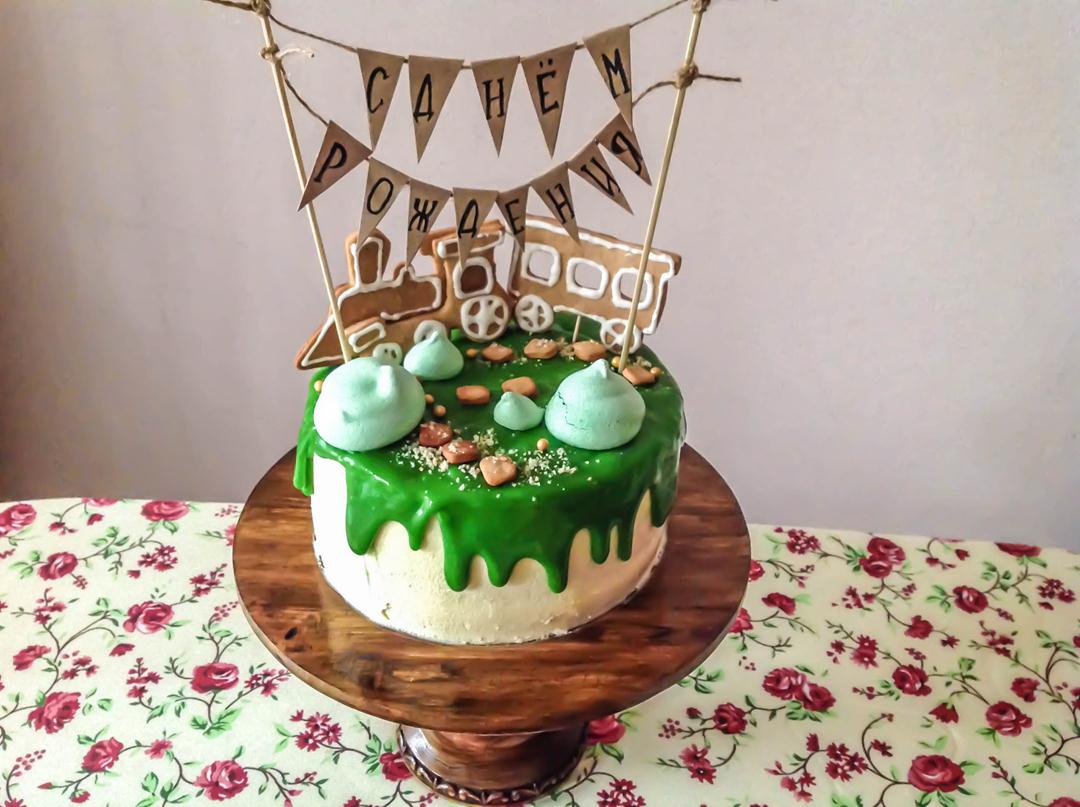
Pastilage
This sugar mastic dries quickly and is convenient for making small parts (for example, it is easy to make a bow, mastic ruffles or edible flower petals from it). Figures made from this mass are durable and can be stored for a long time in a dry room.
For home cooking you will need:
- 0.5 kg of powdered sugar.
- 50 grams of starch.
- 6 grams of gelatin.
- 50 grams of water for wetting.
- A couple of drops of lemon juice and a little honey.
Preparing the mastic takes about 20–30 minutes. First, gelatin is soaked in water with the addition of lemon juice and honey. After everything has swollen, you need to heat the mixture until completely dissolved, and then let it cool. The starch is mixed with powdered sugar, and the dissolved gelatin mass is added there. Everything is whipped with a mixer. If the mass is too thick, then it is better to knead it yourself, with your own hands.
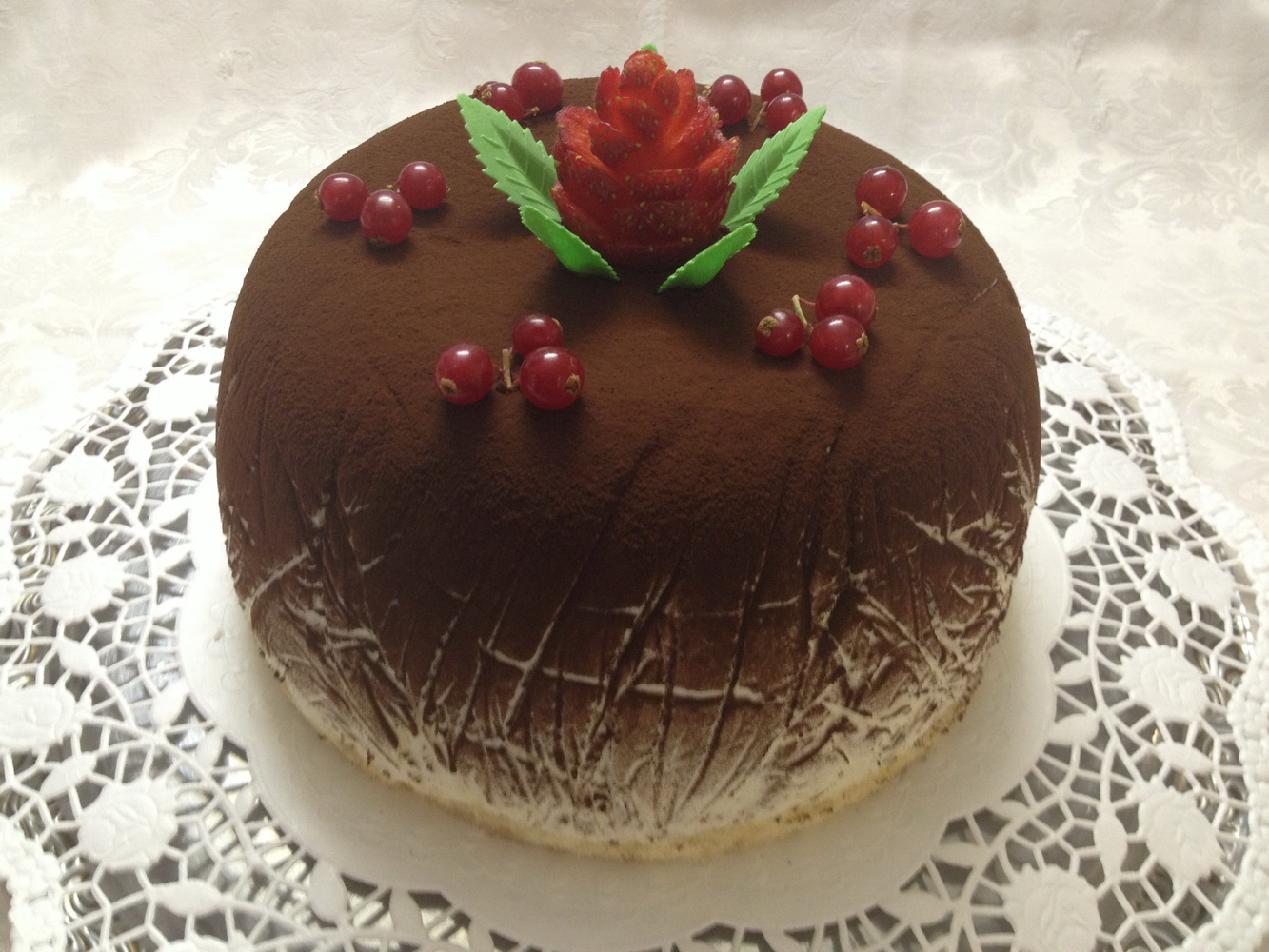
Chocolate marshmallow deliciousness
Mastic for a marshmallow and chocolate cake is convenient because it holds its shape well, does not flow, and does not crumble after the figures dry. And it's also very tasty.
The base is made from the following products:
- Chocolate – 100 grams.
- Small marshmallows – 90 grams.
- Cream – 30 ml.
- Butter – 1 tablespoon.
- Powdered sugar – 120 grams.
- Cognac – 1–2 tablespoons.
Preparation of the mastic mass takes about half an hour. First, carefully dissolve the pieces of sweet chocolate over low heat (the composition does not matter, but milk chocolate will be tastier). We stir it, not allowing it to burn to the bottom of the dish. Without removing from heat, add marshmallows. Cook until completely dissolved. As soon as the marshmallows dissolve, pour the cream, cognac into the pan and add butter. Everything is cooked until a thick, smooth mass is obtained. Remove from heat and add sifted powdered sugar to the hot mixture. Mix until the mixture acquires the consistency of elastic, soft dough, suitable for rolling out and creating the desired shapes.

Custard version
This delicious mastic prepared from the following components:
- Water - a third of a glass.
- Butter – 50 grams.
- Flour – 100 grams.
- Salt - to taste.
- Cocoa (optional) – 2-3 teaspoons.
- Powdered sugar – 300 grams.
Heat water in a saucepan with oil and a pinch of salt. As soon as the butter melts and the water just begins to boil, add all the flour. If you want to achieve a chocolate taste, then cocoa is added along with flour. After the first bubbles, the saucepan is immediately removed from the heat and powdered sugar is added to the mixture. That's it - the base for decorating the cakes is ready. You can roll it out and apply it to the surface of the cake, or use the rolled out base to make a butterfly, sails or other shapes.
Important Rules
There are some rules and secrets that will help in the production and decoration of your baked goods:
- When preparing a cake with mastic, remember that only dense baked goods will do; the fragile texture will not withstand the decor and will crumble and sag.
- The main ingredient is a base of powdered sugar - without it you won’t be able to make mastic for the cake. It can be made at home by simply grinding and sifting granulated sugar, or you can buy ready-made powder in the store.
- To ensure that the figures retain their shape, professionals at their master classes recommend adding starch, honey, protein mixture, gelatin, marshmallows or condensed milk - these products help to achieve the strength of the mass and prevent crumbling. To glue several figures together, you can use egg white with a little powdered sugar.
- The coating for covering the cake cannot be applied to a damp base - to soaked cakes, to sour cream, etc. The mastic mass quickly dissolves from moisture and loses its thick consistency. It is best to prepare the ganache for the cake and place it in front of the fondant (this will protect the decorations from water). A layer of marzipan is also suitable.
- If you cover the entire surface of the cake with a mastic layer, do it with your hands sprinkled with starch. What you definitely shouldn’t do is pull the edges too hard - the mass may tear. We also recommend rolling out the cake thinner (3–5 mm) - a base that is too thick will not lie flat and will look unsightly.
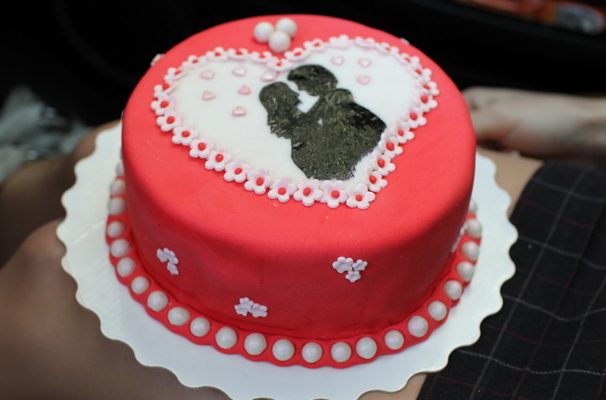
If you want to do colored mastic(for example, to get white, red, brown or black mastic), then it is allowed to decorate ready-made figures with food paints diluted with vodka, cognac or liqueur. To make the surface of the cake shiny, cover everything on top with a thin layer of honey and vodka (mixed in a 1:1 ratio).
So, we have listed the basic recipes and talked about the subtleties with which even non-professional cooks can use sugar mastic for coating a cake. Finally, we recommend watching these video tutorials, which clearly show everything we talked about in the article:



